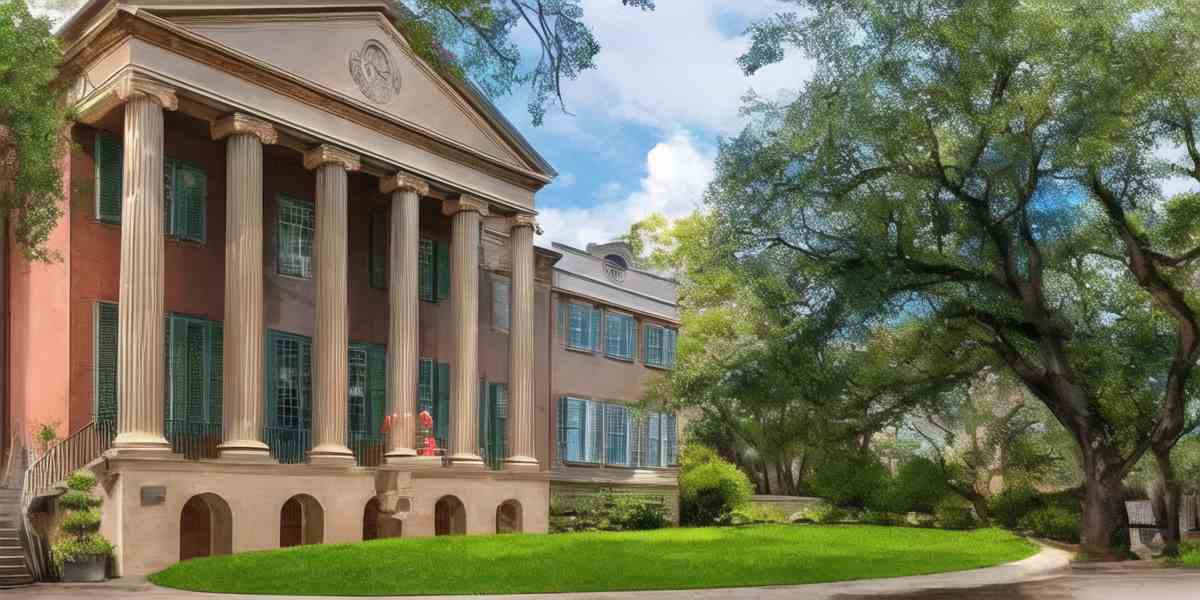University of Charleston
2024 USNews Best Colleges Ranking: 395(↓64) (Click for schools/majors ranking)
School Characteristics: Private, non-Profit (4-Years)
Calendar systerm: Semester
Religious Affiliation: Not applicable
School Chief: Martin Roth (President)
Website: www.ucwv.edu/; Phone: 8009954682
Location: 2300 MacCorkle Avenue, SE, Charleston, WV, 25304

University of Charleston Important Facts
University of Charleston Degrees and Majors
University of Charleston Ranking and Admission
University of Charleston Admission Score Requires
*Numbers at left represent SAT/ACT submitting percentage, numbers on blue blocks represent 25%-75% admission scores
**Drag green block to check data for different years, click blue block to check scores trends
University of Charleston Students Diversity
University of Charleston Students Age Distribution
University of Charleston International Students Trends
University of Charleston Campus and Safety
Nearby Top Colleges
Campus Safety
Reference
- University of Charleston Official Website
- USNews Best Colleges Ranking
- USNews Bset Global Universities Ranking
- THE World University Ranking
- QS World University Ranking
- ARWU World University Ranking
- US Department of Education College Scorecard
- National Center for Education Statistics
- Forward Pathway US College Ranking Database
 University of Charleston Important Facts Trends
University of Charleston Important Facts Trends
 University of Charleston degrees/majors
University of Charleston degrees/majors
University of Charleston major details
*Depends on whether majors have graduates in 2022 or not, Yes / No
**Move mouse on can check deitaled graudates number, click for major detailed information
***Due to privacy policy, graduate salaries are not shown for some majors that has few gradautes
| Major | Graduate Salary | Associate | Under | Master | Doctor |
|---|---|---|---|---|---|
| Business/Commerce, General. | $82,271 | ||||
| Business Administration and Management, General. | $50,544 | ||||
| Organizational Leadership. | $50,544 | ||||
| Accounting. | - | ||||
| Business, Management, Marketing, and Related Support Services, Other. | $37,810 |
| Major | Graduate Salary | Associate | Under | Master | Doctor |
|---|---|---|---|---|---|
| Health/Health Care Administration/Management. | - | ||||
| Occupational Therapist Assistant. | - | ||||
| Medical Radiologic Technology/Science - Radiation Therapist. | $50,244-$116,695 | ||||
| Physician Assistant. | $50,244-$116,695 | ||||
| Pharmacy. | $128,081 | ||||
| Public Health Education and Promotion. | - | ||||
| Registered Nursing/Registered Nurse. | $60,530 |
| Major | Graduate Salary | Associate | Under | Master | Doctor |
|---|---|---|---|---|---|
| Cyber/Computer Forensics and Counterterrorism. | - |
| Major | Graduate Salary | Associate | Under | Master | Doctor |
|---|---|---|---|---|---|
| Sport and Fitness Administration/Management. | - | ||||
| Exercise Science and Kinesiology. | - |
| Major | Graduate Salary | Associate | Under | Master | Doctor |
|---|---|---|---|---|---|
| Biology/Biological Sciences, General. | - |
| Major | Graduate Salary | Associate | Under | Master | Doctor |
|---|---|---|---|---|---|
| Psychology, General. | - |
| Major | Graduate Salary | Associate | Under | Master | Doctor |
|---|---|---|---|---|---|
| Political Science and Government, General. | - | ||||
| Political Science and Government, Other. | - |
| Major | Graduate Salary | Associate | Under | Master | Doctor |
|---|---|---|---|---|---|
| Elementary Education and Teaching. | - |
| Major | Graduate Salary | Associate | Under | Master | Doctor |
|---|---|---|---|---|---|
| Graphic Communications, General. | - |
| Major | Graduate Salary | Associate | Under | Master | Doctor |
|---|---|---|---|---|---|
| General Studies. | - |
| Major | Graduate Salary | Associate | Under | Master | Doctor |
|---|---|---|---|---|---|
| English Language and Literature, General. | - |
| Major | Graduate Salary | Associate | Under | Master | Doctor |
|---|---|---|---|---|---|
| Digital Communication and Media/Multimedia. | - | ||||
| Public Relations, Advertising, and Applied Communication. | - |
| Major | Graduate Salary | Associate | Under | Master | Doctor |
|---|---|---|---|---|---|
| Multi-/Interdisciplinary Studies, General. | - |
| Major | Graduate Salary | Associate | Under | Master | Doctor |
|---|---|---|---|---|---|
| Chemistry, General. | - |
 University of Charleston Schools/Majors Ranking
University of Charleston Schools/Majors Ranking
Under Ranking (2024)
- No Ranking
*Rankings have been updated to 2025USNews schools/majors ranking, rankings are for reference only
*numbers in bracket represent rankings change compare to last version
 University of Charleston Varsity Athletes
University of Charleston Varsity Athletes
| NCAA Division II with football | MEN | WOMEN |
|---|---|---|
| Track and Field and Cross Country (combined) | 111 | 115 |
| Football | 125 | - |
| Soccer | 65 | 34 |
| Baseball | 58 | - |
| Volleyball | 25 | 21 |
| Basketball | 18 | 23 |
| Tennis | 15 | 17 |
| Softball | - | 31 |
| Golf | 16 | 10 |
| Lacrosse | - | 23 |
| NCAA Division II with football | MEN | WOMEN |
|---|---|---|
| All Track Combined | 122 | 114 |
| Football | 138 | - |
| Soccer | 67 | 33 |
| Baseball | 68 | - |
| Volleyball | 21 | 25 |
| Basketball | 19 | 19 |
| Softball | - | 36 |
| Tennis | 16 | 17 |
| Golf | 11 | 10 |
| Lacrosse | - | 16 |
| NCAA Division II with football | MEN | WOMEN |
|---|---|---|
| All Track Combined | 122 | 76 |
| Football | 135 | - |
| Soccer | 67 | 34 |
| Baseball | 59 | - |
| Volleyball | 19 | 27 |
| Basketball | 19 | 22 |
| Softball | - | 34 |
| Tennis | 15 | 14 |
| Golf | 12 | 9 |
| Lacrosse | - | 20 |
| Track and Field, X-Country | - | - |
| Weight Lifting | - | - |
| Water Polo | - | - |
| Wrestling | - | - |
| Other Sports | - | - |
| Archery | - | - |
| Badminton | - | - |
| Beach Volleyball | - | - |
| Bowling | - | - |
| Equestrian | - | - |
| Rodeo | - | - |
| Sailing | - | - |
| Table Tennis | - | - |
| Track and Field, Outdoor | - | - |
| Track and Field, Indoor | - | - |
| Team Handball | - | - |
| Synchronized Swimming | - | - |
| Swimming | - | - |
| Swimming and Diving | - | - |
| Squash | - | - |
| Skiing | - | - |
| Rowing | - | - |
| Rifle | - | - |
| Ice Hockey | - | - |
| Gymnastics | - | - |
| Field Hockey | - | - |
| Fencing | - | - |
| Diving | - | - |

 University of Charleston Important Facts Trends
University of Charleston Important Facts Trends
















































































































































































































































































































































































































































